
ACCESSIBLE PACKAGING AND INCLUSIVE DESIGN
HOW CLOSE ARE WE TO PACKAGING THAT FULFILS EVERYBODY’S NEEDS?



HOW CLOSE ARE WE TO PACKAGING THAT FULFILS EVERYBODY’S NEEDS?

THE CONTENT TEAM
Tim Sykes Brand Director
Victoria Hattersley Senior Writer
Elisabeth Skoda Editor at Large
Libby Munford Journalist
Fin Slater Digital Content Manager
Emma Liggins Journalist
Frances Butler Journalist
THE PRODUCTION TEAM
Rob Czerwinski Creative Lead
Meg Garratt Multimedia Designer
Syed Hassan Digital Analyst
THE OPERATIONS TEAM
Amber Dawson Operations Director

Kayleigh Harvey Advertising Coordinator
Shona Clacher Customer Success Executive
THE SALES TEAM
Jesse Roberts Sales Director
Dominic Kurkowski Senior Portfolio Sales Manager
Matt Byron Portfolio Sales Manager
Clayton Green Business Development Manager
Packaging Europe Ltd
Part of the Rapid News Communications Group
9 Norwich Business Park, Whiting Road, Norwich, Norfolk, NR4 6DJ, UK
Registered Office: No.3 Office Village, Chester Business Park
Chester, Cheshire, CH4 9QP
Company No: 10531302.
Registered in England. VAT Registration No. GB 265 4148 96
Telephone: +44 (0)1603 885000
Editorial: editor@packagingeurope.com
Studio: production@packagingeurope.com
Advertising: jr@packagingeurope.com
Website: packagingeurope.com
Twitter: twitter.com/PackagingEurope
LinkedIn: uk.linkedin.com/company/packaging-europe
YouTube: youtube.com/PackagingEurope
Packaging Europe Ltd 2024 No








Autumn is here, and while temperatures in the Northern Hemisphere drop, the packaging industry’s calendar is hotting up as we’re heading into a very busy time of the year. Here at Packaging Europe, we are very much looking forward to our Sustainable Packaging Summit, which is back in Amsterdam on November 12th and 13th this year. We have a few last tickets available, and you can secure them here: https://www.packagingsummit.earth/2024

As in previous years, at the event we will unveil the winners of our Sustainability Awards, which have been described as the ‘Nobel Prize’ for packaging. Challenging us to take a rigorous and holistic view, the Sustainability Awards sets the agenda on best practice, turns the spotlight on the most important areas of R&D, and helps separate greenwash from the innovations that make a genuine difference. We’ve had a wide range of impressive entries this year, and can’t wait to reveal the winners. You can find out more about what to expect at the event within the pages of this magazine.
Beyond that, we have lots more content in this edition which we hope you will find insightful.
Victoria Hattersley tackles the too often neglected topic of accessible packaging and inclusive design. She asks whether progress has been made, how far away we are from having packaging that truly works for all, and explores recent innovations in the field.
Elsewhere, I take a close-up look at filling and sealing machinery and investigate the challenges and recent innovations particularly in the liquid food and beverage industry, including how growing sustainability demands are driving developments.
Plastics and paper packaging currently get a lot of airtime in the industry, but what about materials such as glass, aluminium and steel? Do these socalled ‘permanent’ materials, infinitely recyclable without losing their quality, come with their own set of challenges? I talk to members of the Permanent Materials Alliance to find out more about the materials’ sustainability benefits and how challenges might be addressed.
Last but definitely not least, Libby Munford discusses ESG – a set of standards that encompass a business’s impact on society and the environment, how transparent and accountable it is in practice, and how it ties in with companies’ sustainability goals.
We hope you enjoy this edition of Packaging Europe and we are looking forward to seeing many of you at the Sustainable Packaging Summit.
The industry has focused more on inclusive design over the past few years, but there is still some way to go before all packaging can be
deemed truly accessible to all. Victoria Hattersley reports.
It’s not a controversial statement to say that the people with disabilities are consistently let down by the systems in place around them. Travel can be at best stressful, at worst traumatic; accessible public toilets are often insufficient or non-existent; clothing can be tricky to fasten (and woe betide anyone who wants to look stylish while also finding something that they can put on in the morning and still get to work on time).
Too often the world does not provide the access required to meet the needs of all, whatever their level of ability. And it’s not that we lack the resources or the capabilities to put these systems in place – it’s that it’s still, even today, not prioritized. So many disabled people I have spoken to say they are not necessarily limited by the disabilities themselves – rather by the world around them that has still not adapted in the way it should.
The packaging industry has historically been no different in this regard and in most respects it still has a long way to go. Research from Open Inclusion, commissioned by the Business Disability Forum, found that 90%
of disabled consumers were affected at the decision-making stage of purchases by either limitations of design, limitations in available information, or how information was presented. There is still little in the way of legal requirements for accessible packaging: the ISO standard for accessible design and ease of opening provides some useful guidelines, but this is voluntary only.
Quite apart from the fact that this is clearly unacceptable from a social and moral standpoint, it makes very little business sense. According to the World Health Organization, an estimated 1.3 billion people, or 16% of the world’s population, experience significant disability, and thanks to an aging population and the rise of uncommunicable diseases this figure can only increase. Why neglect such a vast percentage of your potential customer base?
It falls on brands and the wider industry to take the initiative here by actively investing in more accessible packaging, and it’s fair to say that some progress at least has been made (although it’s hardly a ringing

Too often the world does not provide the access required to meet the needs of all, whatever their level of ability.


In recent years, smart technologies – as in all aspects of our daily lives –have been key to the development of more inclusive packaging solutions. NaviLens is one case in point: Designed to support the visually impaired, the free-to-use system employs codes on packs, similar to QR codes, that can be scanned with mobile cameras to give the necessary information about the product and the pack, creating autonomy in the retail environment.
John Worsfold, head of Solutions Innovation at RNIB, commented on the significance of this technology: “Technology such as NaviLens is a game changer and allows blind and partially sighted people to independently identify and access key information on packaging. This is why we’re so pleased to collaborate with brands such as SMA Nutrition on our ongoing mission to highlight how the industry can raise its game and make packaging more accessible.”
We’ve reported on the use of this technology by a number of brand owners. The above-mentioned SMA Nutrition has announced it will be putting the codes on all its product packaging, to give its customers ‘a higher level of independence when making choices regarding their children’s feeding’. Always Discreet has also partnered with NaviLens in a pilot initiative to enable women living with sight loss experiencing bladder leaks to find the right products on-shelf. Another recent example is the meat-free food brand Quorn, which in 2023 announced it would be using NaviLens codes for packaging across its entire product range.
In a similar vein, Zappar’s Zapvision Accessible QR (AQR) solution for blind or partially sighted people, introduced in 2022, has been gaining momentum across the FMCG sector. These codes can make necessary product and packaging information available to everyone, regardless of
AI-powered virtual assistance for blind and visually impaired consumers via a free app.These codes will now be applied to Colman’s Singapore Noodles Meal Maker packaging. Via their smartphones, consumers will be connected to a volunteer on hand to read and describe cooking instructions; or to a virtual AI-chat bot, which uses Chat GPT-4 capabilities to answer questions surrounding the recipe or cooking process.
For a package to be accessible, the design itself must also be easy to open and simple to handle and dispense afterwards – regardless of ability. This can include tear strips, handles or pop open designs, for example. Users should also be able to open them one-handed.
An example of these principles in action is Proctor & Gamble’s Ariel ECOCLIC laundry capsule box – one of the winners of our 2023 Sustainability Awards. According to Samatha King, vice-president of R&D at the company, “the challenge was balancing child safety with making the packaging easy and intuitive for all adults to open, so that those with dexterity and joint issues could still use it. We found our solution through extensive consumer testing when our team observed how our adult and child consumer testers held and interacted with the prototypes.
“The ECOCLIC opening system was re-designed in line with an adult handspan. We incorporated an audio-cue ‘click’, letting consumers know the pack is safely closed and providing reassurance to those with sight issues.”
Moving from FMCG to the gaming arena, PlayStation has developed new packaging for its customizable PS5 controller kit for players with disabilities, designed to be openable with one hand. The Access controller comes


in a box featuring loops that can be pulled from the left or right side. These are intended to facilitate easy opening and allow consumers to slide the controller out of its packaging. On the inside of the pack are additional loops and a single layer of slots for the various kit components, including 19 interchangeable button caps and three stick caps – aiming for easy identification and access.
Braille or tactile symbols for those with no or reduced sight are also an important element of accessibility. The above-mentioned P&G ECOCLIC box, for instance, features a tactile marker, shaped like a washing machine, to signpost that the box contains laundry detergent. Meanwhile the Microsoft Surface Adaptive Kit uses tactile symbols to enable users to identify critical keys, ports and cables, as well as Braille and QR codes.
Tactile substrates for perishables including food and medication are a relatively recent innovation to help those with sight loss shop independently and with confidence. Mimica’s TOUCHCAP is an example of this: Developed in collaboration with United Caps, the cap is an ‘accessible freshness indicator for all types of perishable products’. It employs a gel, which avoids contact with the food but enables the label to change from smooth to bumpy when the product is no longer fresh.
In future, ‘accessible packaging’ should perhaps come to be considered a misnomer, in that we shouldn’t think in terms of exceptionalism when it comes to packaging design. Quite simply, all packs should be designed to be used by everyone – and then we wouldn’t even need to flag this fact. Brand owners should bear this in mind when it comes to packaging
development. Tools such as Microsoft’s Inclusive Design Toolkit can guide brands in their future packaging development.
To reiterate an earlier point – because it’s worth restating again and again –it’s also crucial that any new pack designs are developed in collaboration with the disabled community. If we look at some of the most successful accessible packaging of recent years, this has been the case. Unilever’s Degree Inclusive deodorant, for instance – a hooked container with enhanced grip placement designed for one-handed usage – was created in partnership with the Muscular
Quite simply, all packs should be designed to be used by everyone –and then we wouldn’t even need to flag this fact.
Dystrophy Association, non-profit organizations Open Style Lab and The Lighthouse Chicago, and a panel of engineers, designers and occupational therapists. Indeed, all of the examples we have given above were developed in dialogue with members of the disability community.
It’s not enough to have a world we can all exist in; we need a world in which everyone can actively participate in, on an equal footing. And yes, of course, the packaging we encounter in our daily lives is only one part of a huge global inclusivity deficit. There are many strands to inequality and of it’s not just disabled people who lack agency. But more accessible packaging is indeed possible today, with the right impetus from companies and more compulsory regulations in place.




Europe’s leading sustainability event, curated by Packaging Europe, is back in Amsterdam, on 12-13 November. We take an exclusive preview of this year’s Sustainable Packaging Summit.
ON12-13 November the doors of Amsterdam’s most inspiring venue, the Beurs van Berlage, once again open to international leaders spanning the entire the packaging value chain, along with brands, NGOs, recyclers and regulators, with a shared mission to accelerate sustainable transformation in packaged goods.

The Sustainable Packaging Summit aims to create a ‘Davos’ dedicated to making packaging fit for purpose in a rapidly changing world. It is focused on impact: through honest dialogue on our challenges, promoting strategic alignment, revealing new approaches that work, and sharing the biggest opportunities in the realm of innovation. It’s explicitly a summit, not a conference, where every attendee is an active participant.
A growing, dynamic community has coalesced around this ambitious and collaborative vision, which has quickly established the Sustainable Packaging Summit as the leading, and largest, packaging sustainability event in Europe.
This year’s iteration of the Summit promises even more ideas and impact than ever before. Organizers Packaging Europe expect 100 speakers and more than last year’s 650 attendees. There will be a fresh approach to the program, featuring more high-profile keynotes and panels on both stages – and even more satellite events than in 2023.

Speakers include:












The Innovation Stage exists to illuminate the opportunities for R&D to accelerate sustainable transformation. It highlights exciting new areas of innovation, discusses the challenges confronting key packaging materials and applications, and shares the learnings from significant projects.
Sessions include:
• Innovation keynotes
• Deep dives into innovation in sustainable materials
• Sustainability in the supply chain
• Start-up pitches
Speakers include:




• Circular pharmaceutical packaging
• Updates on European HORIZON research projects
• Applications of Artificial Intelligence and digitization
• Collaboration visions






As part of the Summit’s vision to bring together the key stakeholders in packaging sustainability, it has built even more synergistic partnerships with organizations pursuing the same mission. As part of the Summit program, attendees will have the opportunity to attend:



A relaxed evening of fine dining, fine conversation and valuable networking, during which the 2024 winners of the Sustainability Awards (the ‘Nobel Prize’ for packaging sustainability) will be revealed.
Masterclass: implementing circular flexibles – EPR and the value chain CEFLEX leads an interactive workshop on supporting and collaborating with EPRs, covering their strategic role in the circular economy in Europe and beyond.
Workshop: the role of biology in sustainable packaging
Normec OWS will teach attendees about the basics of biodegradable and compostable solutions, biological recycling and more, with insights into latest testing and certification.
Workshop: sustainability intelligence & strategy analysis
Leverage data-driven sustainability intelligence and analytics to delve deeper into your company’s packaging portfolio.
FINAT, the European self-adhesive labelling association, has run its labelling sustainability awards in collaboration with Packaging Europe. During the Summit the winners of this competition will be announced, with commentary on the key innovation trends in labels reflected in the competition submissions.
In addition, the Sustainable Packaging Summit is supporting the following co-located third-party events, bringing more like-minded people together in one venue:
Taking place on 11th November, GreenBlue’s European event will be centred around Harmonizing Action. The program will include areas of collaboration and common ground such as the evolution of on-pack labelling; evaluating packaging formats and product portfolios in different world regions to find opportunities for reduction and redesign; finding commonalities of reusable packaging systems to scale them; the role of biodiversity as an ESG priority for packaging; learnings from standardized testing methods; and how to bring data together in a global level to address global challenges.
The flagship collaboration platform, aiming to realize the potential of digital watermarking as a technology that can improve the quality and viability of recycling, holds its annual member meeting as a guest of the Sustainable Packaging Summit for the second consecutive year. Latest developments and outlook in the project will be discussed as part of the Summit program.
ECPA will host its conference, bringing an exciting line-up of international speakers to discuss crucial topics for contract packers and contract manufacturers.
The Sustainable Packaging Summit is the leading international event dedicated to packaging sustainability in a rapidly changing world. Join us to keep on top of industry developments, stay abreast of key topics and regulatory changes, discover innovative solutions, and forge new collaborative relationships, in a friendly and open environment.
For tickets and more information, scan the QR code or visit packagingsummit.earth/2024

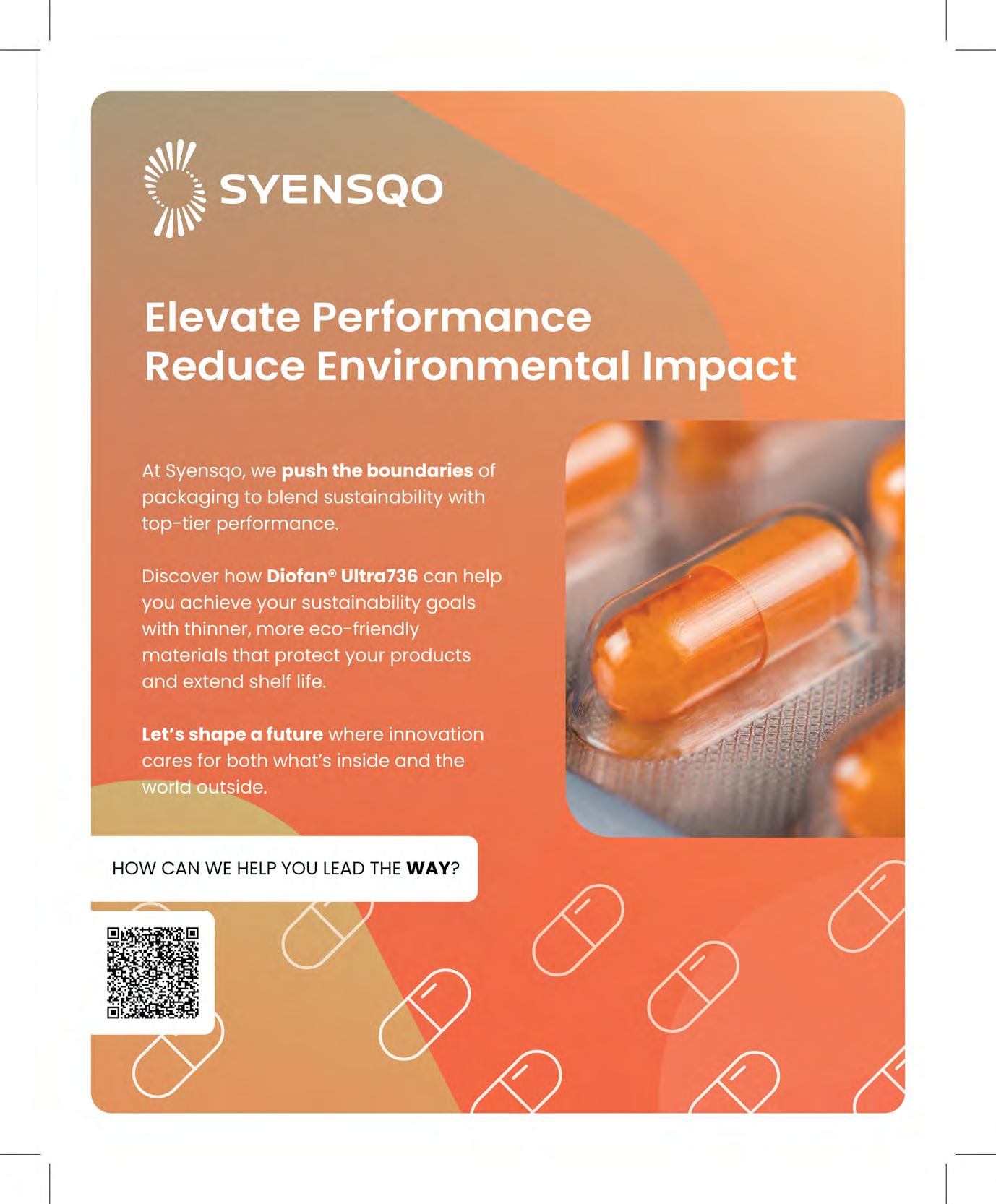

What’s happening in the world of filling and sealing machinery? How do some of the big industry players tackle the challenges the industry faces, particularly in the area of sustainability? Elisabeth Skoda gets the liquid food and beverage industry perspective and speaks to experts from Ampack and SIG.
Norman Gierow, Director Global Customer Marketing & Positioning at SIG, highlights sustainability as one of the defining factors in the industry.
“On the one hand, consumers and regulators push for reduced plastic use, lower carbon footprints, and better recyclability; and on the other hand, beverage producers have sustainability targets and countless KPIs to meet.”
Further important topics are automation and digitalization, as he points out.
“As filling plants and factories operate on an unprecedented scale, production lines need to be more flexible, individualized and agile to handle periods of higher outputs and faster product changes. But this can only be achieved by securing greater asset optimization. This means configuring the optimal long-term infrastructure that can flexibly handle any operational demand, and by ensuring intelligent recipe and job handling throughout production. Automation in packaging processes is becoming essential to enhance efficiency, consistency, and scalability. The integration of digital technologies in packaging and filling systems is transforming the industry. Smart packaging, IoT, and data analytics are being used to improve traceability, optimize production, and enhance consumer engagement.”
Mr Gierow highlights the importance of delivering products that have a longer shelf life, high nutritional value and are sustainable. He mentions three key points that need to be addressed to fulfil this.
“Recipe formulation is important, i.e. customizing ambient products to meet varying tastes and dietary requirements. Within SIG’s customer experience and innovation hubs, equipped with state-of-the-art processing equipment and filling machines, customers can collaborate with SIG experts to develop new product formulations.”
Secondly, there is a focus on consumer-centric packaging solutions: Packaging plays a crucial role in preserving product quality, enhancing convenience, and communicating brand identity.
“SIG provides innovative packaging solutions that extend shelf life and provide engaging consumer experiences, all while aligning with sustainability goals,” he states.
Thirdly, early-stage testing is key. “The global SIG innovation hubs feature state-of-the-art UHT processing and filling technologies. Due to the technology, SIG enables customers to refine product ideas, test the concept technically and with consumers and ultimately bring products faster to the markets. One promising product example is the first concept of an

aseptic long-life live probiotic yoghurt, which has been successfully tested in one of SIG’s innovation hubs together with a partner.”
Oguz Karcier, Global Product Manager at Ampack GmbH, points to nutrition trends as a driver for filling and sealing machines, giving liquid meals that promise a daily ration of calories.
“For certain consumer groups, these products are an absolute necessity: infants or patients in a weakened state, for example, need proteins and minerals in dissolved form as they cannot consume them otherwise or only with great difficulty. As life expectancy rises, so does the demand for liquid meals that enable caregivers to nourish a growing number of ageing patients. In addition, the fast pace of modern life and higher mobility are driving demand for drinkable meals that can be kept unrefrigerated and consumed on the go, without compromising on sustainability. The greater the need for disposable packaging becomes, the more food manufacturers need to rely on resourceefficient, recyclable packaging solutions to avoid packaging waste.”
In the light of increasing market demand, manufacturers are faced with the question of how to fill liquid products safely – in large quantities, in varying
bottle formats and materials. Ampack’s answer is the newly developed FBL filling and sealing machine for liquid food, as Mr Karcier explains.
“In terms of product safety, the FBL allows us to fill products aseptically, i.e. including bottle decontamination, ensuring maximum product protection and a long shelf life both inside and outside the cold chain. The machine’s design also meets 3-A requirements for the highest hygiene standards and comprises an innovative tunnel design in the sterile filling area. Its neck-handling system further ensures fast bottle format changeovers.”
This neck-handling system for bottle filling machines was developed further for the FPL by Ampack to ensure faster changeovers compared to e.g. base-handling systems, he explains.
“Unlike the base, the bottle’s neck rarely varies in diameter, allowing manufacturers to process several packaging volumes and materials on one machine. If changeovers are needed, they are equally quick and minimal, helping manufacturers to easily switch between e.g. HDPE (for particularly high barrier protection), PP, PET, and rPET, securing short set-up times and high productivity. Moreover, high disinfection rates are paramount to ensure maximum product safety and a long shelf life both with and without cooling,” says Mr Karcier.
Norman Gierow:
“Materials like renewable paperboard and plant-based polymers are gaining traction due to their favourable environmental profile. Design options are likely to focus on communicating sustainability, with an emphasis on certifications.”

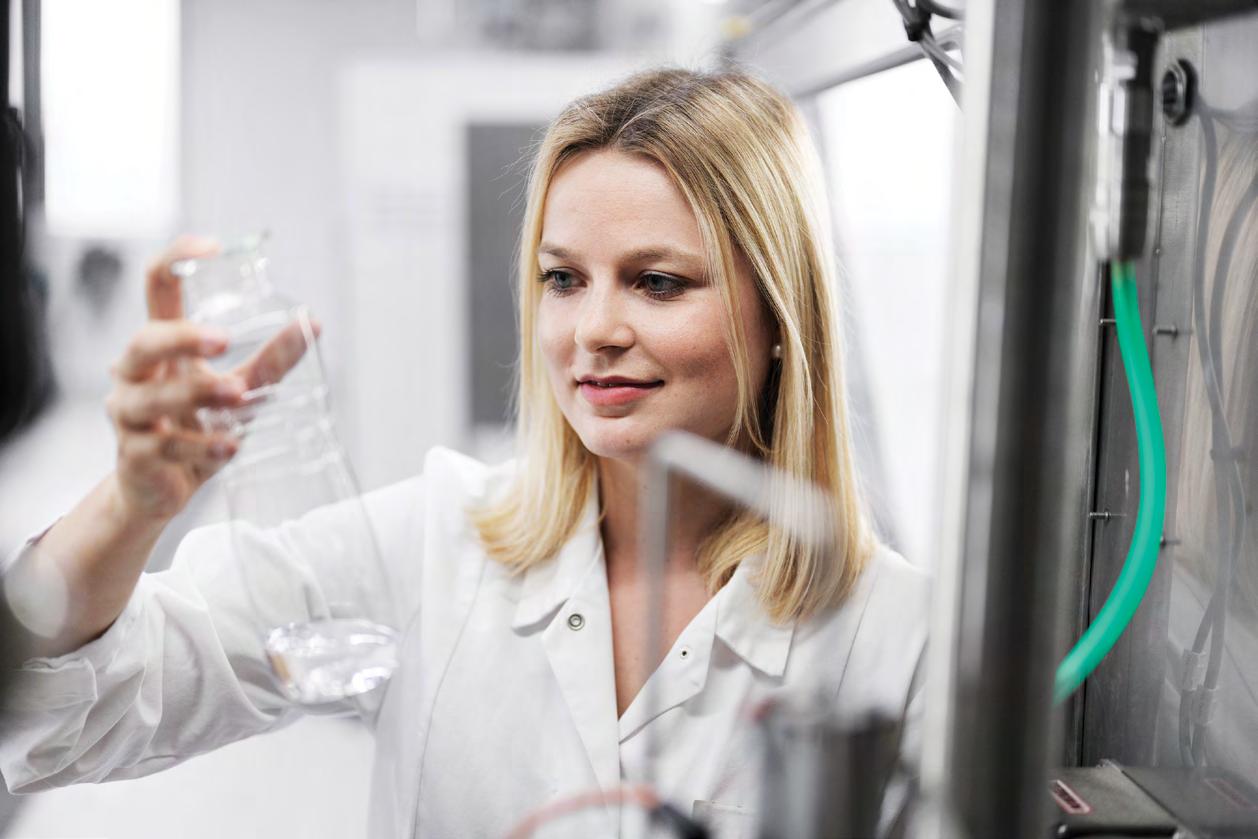
taminated thanks to the FBL’s versatile new sterilization system.
“PET, for example, is more temperature-sensitive than other materials and is more prone to absorbing the hydrogen peroxide (H2O2) used for sterilization. This is why the FBL comes with precise temperature control in the sterilization tunnel within the machine, ensuring optimal decontamination rates for each packaging material used. The tunnel’s innovative design also contributes to an aseptic environment during filling: the Ampack machine effectively separates production and mechanics. Moving parts are located in a separate area to avoid contamination in the sterilization tunnel. The tunnel’s reduced size allows for better control of the airflow in the sterile area, contributing to overall high sterility and product safety.”
Sterilization is key for product safety, and Mr Gierow mentions the recently launched spouted pouch filling system for pre-made spouted pouches, the SIG Prime 55 In-Line Aseptic, which removes the need for third-party pre-sterilization.
“The resulting system reduces supply chain complexity and improves the overall costs to produce aseptically packaged products in spouted pouches. The new filling system offers technological progress by transferring SIG’s expertise in aseptic filling technology with in-line sterilization, which has been successfully in use for decades in the field of carton packs, to spouted pouches. The breakthrough here is a new and unique way of sterilizing spouted pouches in-line, ensuring sterilant flow and coverage of the packaging while it’s in the filling tunnel. By eliminating the need for pre-sterilization of the pouches, we’re able to give producers full control and flexibility of their production.”
At SIG, growing demand for particularly sustainable materials has been observed for many years, and legislation such as the PPWR has catalyzed this development and accelerated the transition, explains Mr Gierow.
“Our packaging solutions are designed and manufactured to have a lower carbon footprint than other packaging formats and to be fully recyclable. We are striving to reduce our environmental impact even further through sustainable innovations. In this context, our SIG Terra portfolio is worth mentioning. Our most sustainable packaging material innovations can be easily integrated into all SIG systems, across all packaging types. Featuring a full barrier aseptic carton packaging material with no aluminium layer, SIG Terra Alu-free + Full barrier is a ‘simple yet powerful’ differentiator and embodiment of sustainability in aseptic carton packaging for an increasing number of product categories, for example for use with sensitive products such as fruit juices, flavoured milk, and plant-based beverages.”



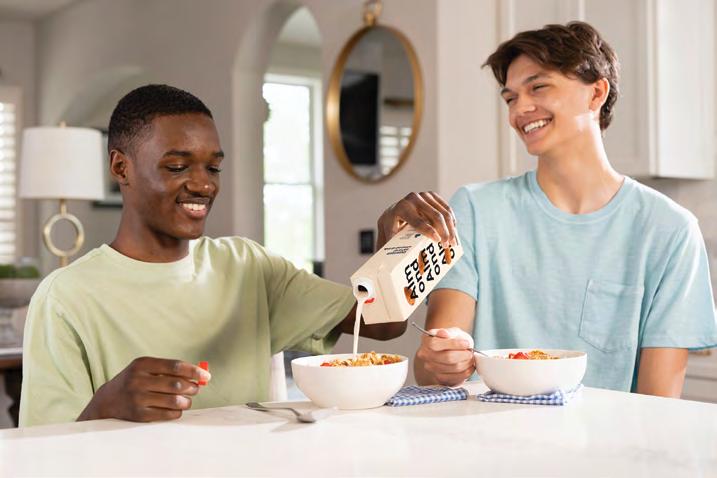
He points out that by taking out the aluminium layer and replacing it with an ultra-thin polymer-based barrier, 25% of CO2 is removed from the equation.
“By going from three to two main materials, we simplified the packaging structure and enabled wider recycling opportunities while maintaining the full protective barrier properties, high quality standards, nutritional value, and shelf life.
“The flexibility of SIG’s filling machines makes it possible for SIG customers to run SIG Terra and standard SIG packaging material on the same filling machine with minor investment, fast changeover, and the same production performance.”
Mr Karcier remarks that liquid food manufacturers are constantly seeking to adapt products and processes to become more sustainable.
“This affects their choice of packaging, which might as well be influenced by product characteristics. HDPE, for example, offers excellent barrier properties and is used for clinical nutrition. PET offers good recyclability, which for some manufacturers might tip the scales in favour of this packaging material. PET bottles and corresponding recycling technologies can help achieve the targets set out in EU regulations, according to which plastic beverage bottles should contain 30% recycled material by 2030. Ampack aims to offer future-proof technology, which spans material and energy usage alike: during the development of the FBL machine, the company paid special attention to reducing energy consumption.”

Oguz Karcier:
He observes that the food market is highly dynamic, with new products constantly emerging to address consumer needs, so working on new filling and packaging solutions that meet safety standards and consumer expectations is important.
“Along with packaging materials and formats, filling systems will have to evolve to ensure profitable production in the long run. Ampack’s FBL offers built-in system flexibility thanks to its modular machine concept. It helps manufacturers to continuously expand and adapt the machine, e.g. by adding dosing stations, supporting them in keeping up with market and customer requirements. Moreover, in times of increased sustainability efforts, packaging materials become thinner to reduce plastic waste and support recyclability.”
Mr Gierow points out that predictions suggest a shift towards proven sustainable packaging solutions made from renewable materials and reducing the use of fossil resources.
“Materials like renewable paperboard and plant-based polymers are gaining traction due to their favourable environmental profile. Design options are likely to focus on communicating sustainability, with an emphasis on certifications. Additionally, manufacturers are exploring lighter packaging options to minimize carbon footprint and transportation costs. This sustainability-driven approach is significantly influencing R&D efforts, with a focus on developing innovative packaging solutions that align with consumer demand for even more sustainable choices.”
HDPE, for example, offers excellent barrier properties and is used for clinical nutrition. PET offers good recyclability, which for some manufacturers might tip the scales in favour of this packaging material. PET bottles and corresponding recycling technologies can help achieve the targets set out in EU regulations.


Sustainability has been the key word in the packaging industry for years now, but what about ESG - a set of standards that encompasses a business’s impact on society, the environment and how transparent and accountable it is? Surely, these are goals we should all be striving towards as an industry – zooming out on the whole picture rather than focusing in on one aspect?

Back in April 2024, the Packaging Europe news desk received a fresh copy of Colpac’s first ESG report. Colpac, an SME, offers paperboard food packaging designed to protect and preserve products. Libby Munford explores why an SME has undertaken this approach, sitting down with Talia Goldman, ESG Manager, Colpac, who explains in passionate detail the importance of staying ahead of the curve.
Bill Fish, PPG, General Manager, Silica Products at PPG, a global leader in paints, coatings and specialty materials, is also a passionate advocate for following an ESG agenda (PPG released an update in May 2024 on its 2023 ESG report) opening with his statement to Packaging Europe, “It is imperative that we do our part in protecting and beautifying the world around us.

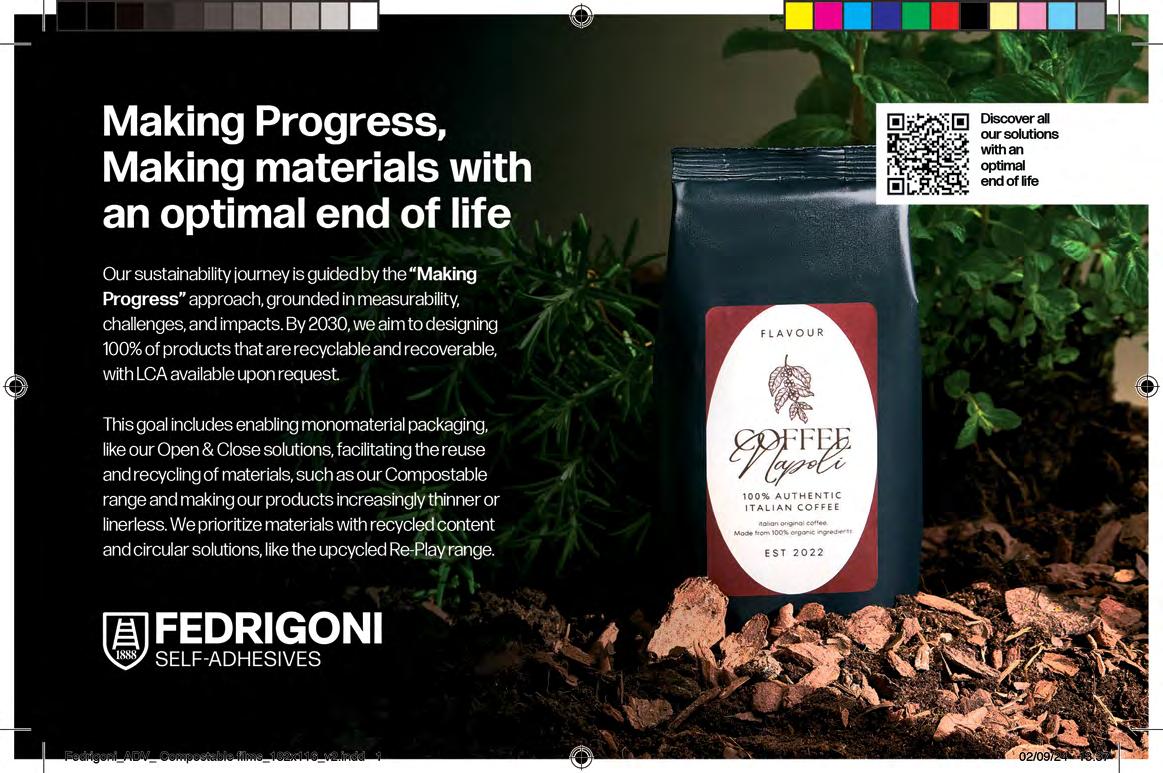

We’re now focused on ESG as a whole – fundamentally because sustainability as a concept cannot exist in a silo – it’s not just one project that can be boxed away in a corner.
With ESG there’s no deadline – it’s constant development, constant improvement. For example “We are constantly looking for ways to reduce our environmental impact, to improve wellbeing, to ensure we are being as responsible and robust as we can be,” explains Talia Goldman. Some timelines are imperative, however.
Colpac’s Net Zero programme started in January 2023 – and successfully set five interim and Net Zero targets last year. Talia Goldman shares, “We’ve achieved scope one, two and three calculations so far. We have a scope one Net Zero target for 2035, scope two for 2030, and an overall Net Zero target by 2045 – all of which we fully intend on achieving earlier.” Two of those targets have been evaluated by a body called the Science Based Targets initiative.
From a corporate perspective, PPG’s near-term 2030 greenhouse gas emissions reduction targets have also been validated by the Science Based Targets initiative. PPG also set 2030 targets related to sales from sustainably advantaged products, reduction in water intensity, reduction in waste intensity, reusing, recycling and recovering 100% process waste and more.
By assessing current models and innovating, small changes in processes can be transformative. Talia Goldman states that changing the dimension of their outer cases, optimizing pallet configurations, and working with customers to consolidate deliveries “sounds simple, but isn’t necessarily, and yet it can lead to energy and emissions reductions across the board.”
This latest progression in supply chain logistics reduces the risk of contamination of the product, reduces shipping times to improve inventory and planning, reduces GHG emissions, and ultimately lowers costs for the customer.
In terms of sustainable transportation practices, PPG claims it is the first silicas manufacturer in North America that is now able ship directly in bulk vessels such as silo trucks, which eliminates transloading, or the transfer of goods from one mode of transportation to another en route to their ultimate destination.
“PPG can now transfer our Flo-Gard silica products for food and animal nutrition customers materials directly from a production facility into a bulk silo truck for transportation to its destination. Compared to incumbent methods of importing materials in sacks to be transloaded

into bulk trucks to move to production locations, this latest progression in supply chain logistics reduces the risk of contamination of the product; reduces shipping times (from about four months to less than a month) to improve inventory and planning; reduces GHG emissions; and ultimately lowers costs for the customer,” shares Bill Fish.
The world is shifting focus from simply carbon accounting to accountability. Beginning with raw materials all the way to upstream impacts, at PPG for example, it is creating emission-reducing solutions that will positively impact the value chain, from its direct customers to the brand owners and food manufacturers.
As an SME, Colpac is not mandated by the government to undertake any kind of ESG reporting or calculations currently. “For us as a business we decided to voluntarily do more than is expected or required of us. We stake a lot of our credibility on our ambition to continue to do a lot of work in this space, in a very accurate and detailed way,” Talia Goldman underlines.
She concludes that although currently there may be a state of overwhelm around achieving Net Zero targets, “we must start.
“We instil ESG because we believe in it – SMEs are small but mighty companies, there is so much potential to make change. Even if you start small.”



Materials such as such as glass, aluminium and steel are described as ‘permanent’ – which means they can be recycled infinitely without losing their quality or structural properties. Does that make permanent materials a fast-track solution towards a fully circular economy? What are the challenges and opportunities around them in their packaging applications? Elisabeth Skoda explores these questions with FEVE, Metal Packaging Europe and Steel for Packaging Europe – all members of the Permanent Materials Alliance.

The Permanent Materials Alliance brings together the glass and metal packaging industry. The sectors collaborate to promote the benefits of permanent materials and help deliver a circular economy in Europe.
One of the aims is to highlight that all recycling is not created equal.
“One of our objectives is to gain recognition of the concept of permanent materials and their inherent benefits. It is our ambition to raise awareness that some materials can be recycled indefinitely, while other degrade after a few recycling loops,” says Michael Delle Selve, Head of Marketing and Communications at FEVE.
PMA defends the concept of permanent materials as a sustainable solution to increase the circularity of packaging in Europe. In a resolution about the Circular Economy Action Plan adopted in February 2021, the European Parliament already introduced the idea of permanent materials, underlining the need to promote a high quality of material collection flows, and recycling.
“For the aluminium sector, we also work closely with NGOs and customers on Deposit Return Schemes as we consider these the best solution for the circularity of aluminium beverage cans,” says Krassimira Kazashka, CEO at Metal Packaging Europe.
Recent European figures demonstrate that 80.5% of steel packaging and 76% of aluminium beverage cans are recycled.
In 2021, MPE and European Aluminium launched a roadmap towards 100% aluminium beverage can recycling by 2030, and they are members of a global coalition with the aluminium beverage can value chain (from suppliers to customers) to have global recycling targets of at least 80% by 2030 and near 100% by 2050. This awareness campaign is directly oriented to consumers run across Europe and worldwide via Every Can Counts.
An over 80% collection rate is reported for glass. Achieving this depends on a well-working collection and recycling infrastructure. The glass value chain is cooperating to reach a collection rate of 90% by 2030.
“Today, 80.2% of glass containers are collected for recycling. 92% is effectively recycled, of which, 91% is recycled back into glass containers. This creates a virtuous cycle, saving on the extraction of virgin raw materials and reducing the use of energy and CO2 emissions. This is therefore directly functional to our industry’s decarbonization efforts,” explains Vanessa Chesnot, Head of Public Affairs & Product Policy at FEVE, the European Container Glass Federation.
“In fact, today most furnaces run on natural gas, which causes an estimated 80% of CO2 emissions from container glass production. The remaining 20% comes from virgin raw materials. There are two paths to decarbonize. One is to switch from natural gas to low carbon energy with electric or hybrid furnaces, and the other is to replace virgin raw materials with recycled content.” explains Ms Chesnot.
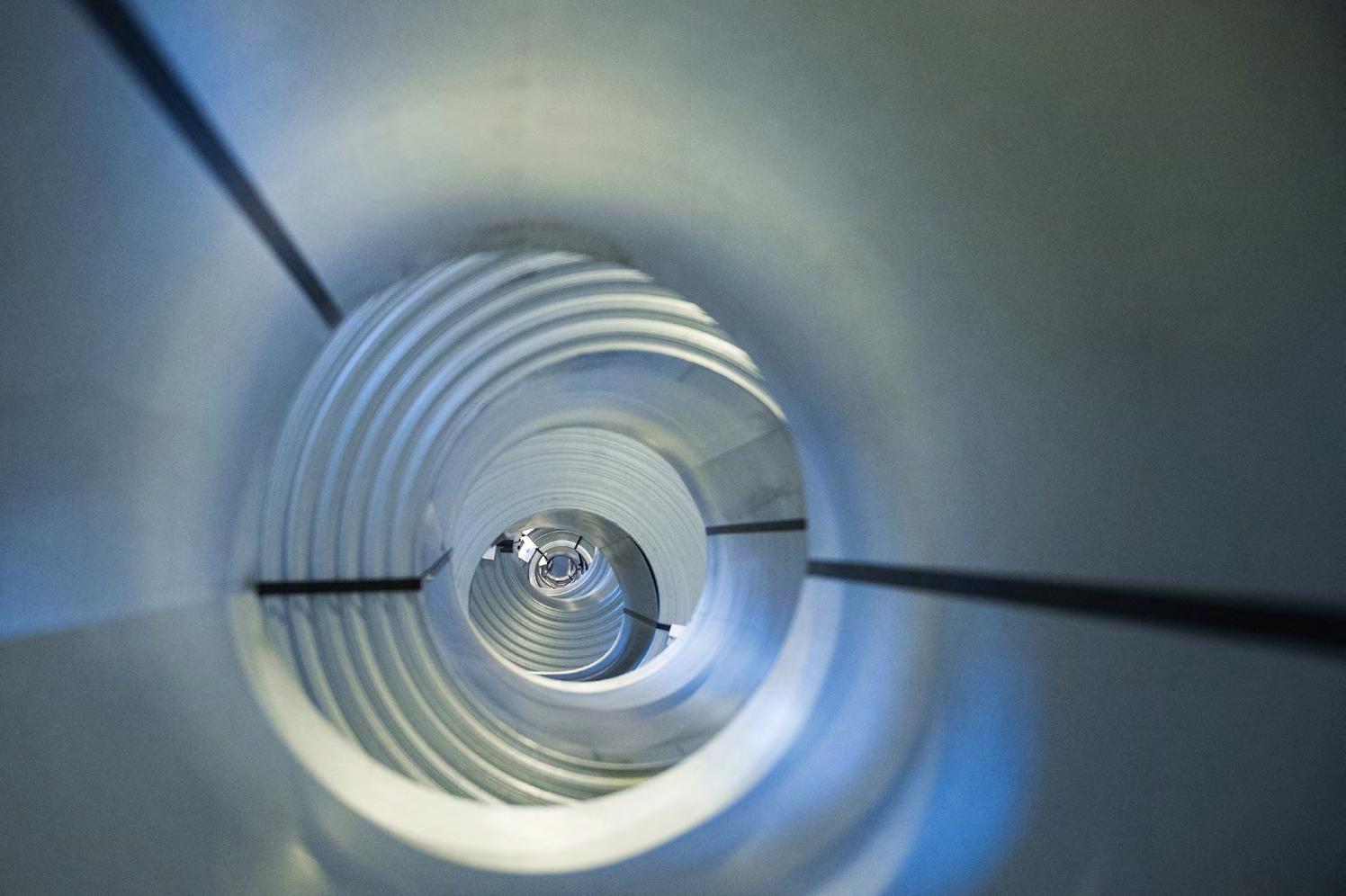
The benefits of using recycled glass reach beyond the obvious.
Steel for Packaging Europe recently reported that steel packaging remains the “most widely recycled sales packaging material in Europe”, according to the recently harmonized method for calculating packaging recycling rates within the EU.
“Scrap metal is integral to the steelmaking process, so every steel plant is also a recycling plant.”
“Scrap metal is integral to the steel-making process, so every steel plant is also a recycling plant. This means that every steel product placed on the market contains a high level of recycled content,” explains Steve Claus, Secretary General at Steel for Packaging Europe.
He is keen to point out the performance that steel packaging can offer throughout the value chain.
“It is a highly versatile material well suited to a wide range of packaging formats and products thanks to its strength, the fact that it is tamperproof and allows products to be stored for long periods at ambient temperatures, reducing waste.”
Glass is heavier than other packaging materials such as plastic. Ms Chesnot points out that the industry is working with customers to address lightweighting in the design of new containers. For example, traditional wine bottles are 25% lighter today than 30 years ago while maintaining their unique design that is very important as a value-added proposition for customers.
“One of the strong assets of glass packaging is the potential for distinctive designs in terms of shape, colours and transparency. Brands value that, so it’s important to keep that while lightweighting.”
Lightweighting has also been a big topic for metal packaging.
“Advancements in metal packaging have enabled significant weight reductions without sacrificing strength. For example, modern food and beverage cans are now at least 30% lighter than their predecessors. These innovations collectively improve the sustainability and efficiency of production and processing,” says Ms Kazashka.
“Going forward, we need to have innovative large-scale furnaces that can produce all types of glass while continuing to incorporate high rates of recycled content. That’s the challenge that the new furnaces need to address, and hybrid furnaces are an innovation breakthrough there. But to decarbonize our industry, we need green or low-carbon energy, that is available, accessible and competitive. Our industry is strongly committed and directly investing in this major transition, but it is part of an eco-system
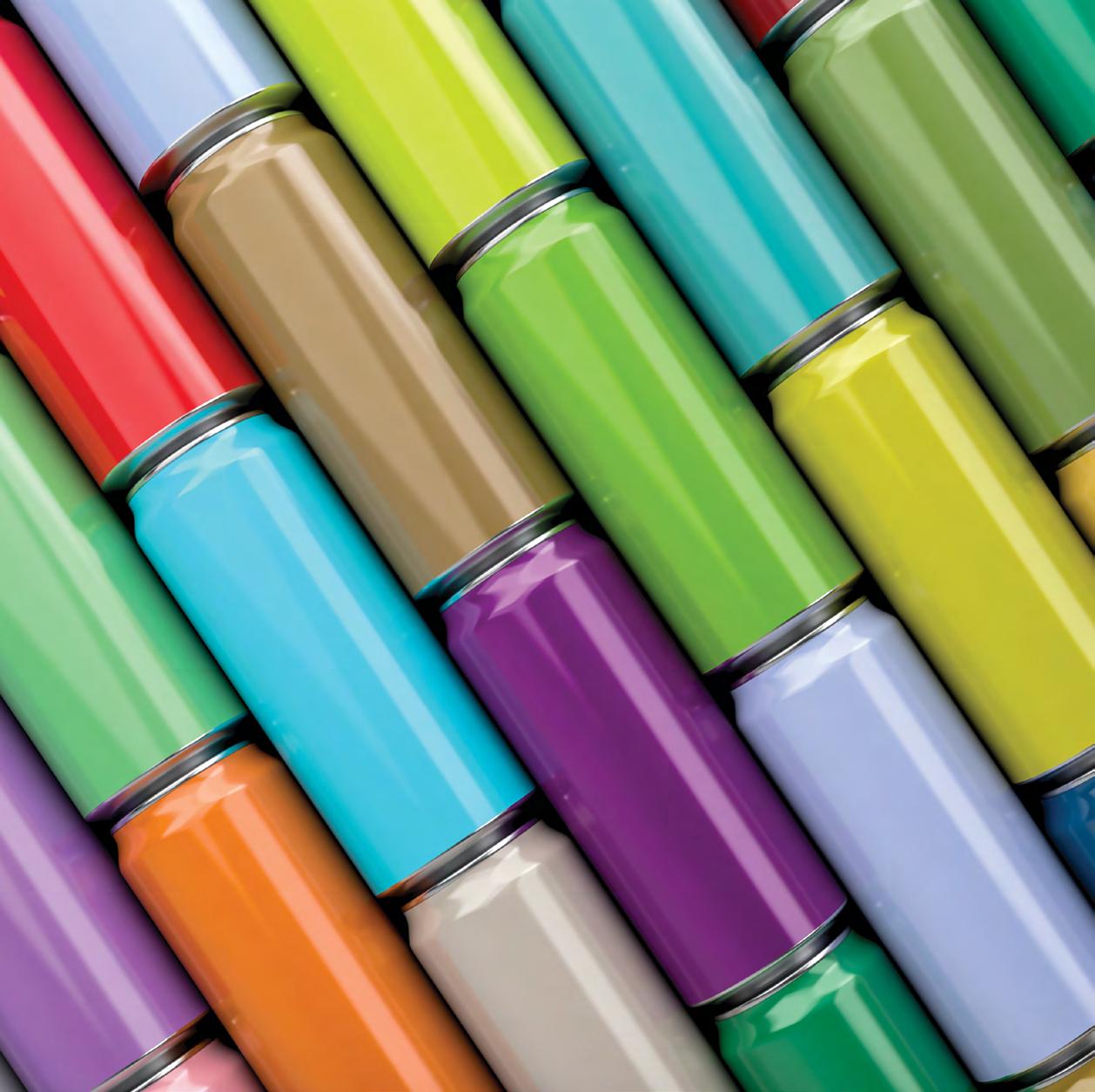
and we need support from policy and the value chain to make sure that we continue to best meet customer demand while addressing sustainability imperatives,” adds Mr Delle Selve.
He points out that while the glass industry is working hard on reducing its carbon footprint, other factors matter too.
“Today, the carbon footprint is a monocular filter to assess a material, but when we look at packaging, we need to look beyond it at product preservation, shelf life and recyclability.”
Michael Delle Selve:
“Today, the carbon footprint is a monocular filter to assess a material, but when we look at packaging, we need to look beyond it at product preservation, shelf life and recyclability.”
On the top of circular assets, glass is a one layer, non-toxic and inert material, and there is virtually no migration between the packaging and the content or vice versa. This helps preserve quality, extend shelf life and reduce food waste.
Steel and aluminium face a similar set of challenges around CO2 emissions and have historically been seen as emissions-intensive industries, but there has been progress. According to Steel for Packaging Europe, the most effective companies in the European steel industry have reduced the consumption of primary energy per tonne of crude steel by 50% since 1960.
Improvements in the steel packaging industry are driven in areas such as lightweighting, shaping, openability and decoration.
One of the most significant developments reportedly has been the replacement of hexavalent chromium in the passivation of tinplated steel
(ETP) with a 100% chromium-free alternative called Chromium Free Passivation Alternative (CFPA), says Mr Claus.
“A modern and equivalent passivation that meets all quality standards and regulatory compliance in European manufacturing, tinplate cans made with CFPA are already on the shelves as can makers across Europe adopt CFPA with positive results. However, to ensure the continued supply of European steel for packaging during the transition to CFPA, Steel for Packaging Europe confirmed in April that its members had all completed the REACH Authorization process, with review periods until the end of 2027 for ETP.”
Ms Kazashka points out that the main factor influencing production costs is raw material prices, which fluctuate due to market forces, trade policies, geopolitical conflicts, and international treaties. The European Critical Materials Act has recognized aluminium’s critical role and the associated supply risks, aiming to ensure a more secure and sustainable supply chain.
“Recycled metal is a valuable resource. Using recycled aluminium, for example, to manufacture new products can save up to 95% of the energy demand compared to using virgin raw materials. This circular approach stimulates further investment in recycling technologies.”
The formal adoption of the Packaging & Packaging Waste Regulation (PPWR), provisionally voted by the European Parliament in April 2024, endorses stricter recycling measures.
Steel for Packaging Europe and the Permanent Materials Alliance welcome this, in particular, the establishment of design for recycling criteria, applicable to all packaging, and the introduction of packaging recyclability performance grades, differentiating between packaging categories, by 2030.
“The introduction of a performance grading system with clear criteria is the first of its kind. This is an essential measure to ensure packaging materials are designed for recycling, but also to ensure they are effectively collected, sorted, and recycled at scale. It is regrettable however that the criteria only come into

effect in 2030. The Association would have welcomed a more robust legal push towards the materials that can be recycled multiple times without loss of quality. The quality of recycling still poses issues for many other materials, leading to resource inefficiencies,” says Mr Claus.
Ms Chesnot points out that the PPWR is a radical change in the packaging policy framework that will set out to reduce the amount of packaging put on the market.
Vanessa Chesnot:
“According to estimates, more than 20% of soft drinks, mineral waters and beers are packaged in reusable glass today in Europe, with Germany being a leader in the sector.”
“As part of the waste reduction target, this covers not just waste, but the actual packaging, which is a radical change in how packaging is received. We have to be vigilant that this does not go against glass just because it is heavier as a material. Otherwise, glass packaging is very well equipped to help brands achieve the goals laid out in the PPWR due to its properties.”
Ms Kazashka highlights the introduction of a definition for high-quality recycling within the PPWR.
“We consider this a positive step towards higher quality recycled materials and reduced demand for primary raw materials. The introduction of a provi-

sion about the setting up of mandatory deposit return scheme for aluminium beverage cans in the EU Member States was also a positive addition, allowing recycling to advance further at higher speed.”
The PPWR contains ambitious targets for reusable packaging, stating that by 2030, at least 10% of alcoholic and non-alcoholic beverages should be offered in reusable packaging, and by 2040, the aspiration is to reach at least 40%.
Glass is well equipped for this, as Ms Chesnot points out.
“According to estimates, more than 20% of soft drinks, mineral waters and beers are packaged in reusable glass today in Europe, with Germany being a leader in the sector. Glass is inert, it’s robust and durable so can be cleaned many times and go through multiple reuse cycles (up to 50).”
She points out that reuse and recycling should work together.
“Reusable packaging can be a good solution to support sustainable supply chains and reduce waste, especially for short distances. However, it may not be the best fit for every product. As an industry, we communicate that the one-way and reusable solutions complement each other depending on specific contexts.”
Likewise, metal packaging has supplied reusable packaging for years, for example in industrial packaging or beer kegs.
“We need to remember that reuse is not a unified solution for all products and applications. The aim for the EU is to have all packaging reusable or recyclable in an economically viable way by 2030,” says Ms Kazashka.
In conclusion, permanent materials offer clear benefits, while challenges around carbon emissions and energy use need to be addressed further to fully unlock their potential in a circular, low-carbon future. They certainly have a big role to play in the portfolio of packaging materials.


In an industry that is becoming ever-more demanding with increasingly complex regulations, how can using the principles of Industry 4.0 and digitalization help brands to manage their packaging workflows and project the right brand image, while also meeting their mandatory requirements?
The importance of digital management when it comes to packaging workflows is something that Miller Graphics, a leading provider of graphic packaging services, is very keen to impress upon the many brand owners it already serves across a wide range of industry sectors.
We will shortly go into more detail about the company’s suite of services and how this enables its clients to address the specific packaging workflow challenges they face through the principles of Industry 4.0, but more generally, we start by asking a simple question: Why exactly are digital packaging workflows so essential to brands today?
“Digital management of print workflows is essential because it increases efficiency by automating processes, minimizing waste, enhancing quality and consistency, and reducing the risk of data breaches,” says Group President Philippe Bataillie. “It also allows for better collaboration and faster time-to-market, which are crucial in today’s competitive marketplace.”
To this end, in 2020 Miller introduced the 100% cloud-based Atom software suite, which it says aligns with the principles of Industry 4.0, leveraging automation, real-time data, and digital integration with existing systems (ERP/PIM). The platform, says the company, is intended for brand owners to fully control their packaging project management from design to print.
“Atom is designed for packaging professionals, by packaging and print professionals,” says Karin Hoga, Group Marketing & International Sales
Director. “It is a modular solution tailored to meet FMCG industry needs. It enables packaging professionals to manage the entire lifecycle of their packaging projects and deliver compliant, consistent and print-ready packaging in no time.
“The software is also designed to scale with the brand’s needs, making it suitable for both small enterprises and large multinational corporations.”

Briefly, Atom comprises three key components:
1. Atom Millnet is an integrated digital packaging workflow platform that enables users to automate processes for ‘fast collaboration, transparency, productivity, quality and connectivity’, providing control over the entire packaging project management with real-time data, enabling faster decisionmaking, online approval and online review which, ultimately, says Miller Graphics, shortens the time-to-market.
2. Content Management is one of Millnet’s optional modules. Crafted to produce high-impact packaging that complies with GS1 standards from the start, it acts as an MDM (Master Data Management) solution. Integrated with existing systems (ERP/PIM/DAM), packaging and label templates are automatically filled


with accurate product information like regulatory text, bar codes, EAN codes, and product details. Bulk updates replace manual changes on each artwork.
Streamlined management of product information: real-time generation of PDF packaging files and instant approval of amendments.
Management of the different languages featured on packaging: generating multilingual artworks in a few clicks.
3. Artwork Online is designed to allow brands to create packaging artwork efficiently and securely from personalized templates (Artwork Automation). Through this method, says Miller, texts, colours, graphic elements, images and barcodes can all be amended quickly and accurately, to ensure consistency.
Brand owners will be more than cognizant of the challenges and bottlenecks they face when managing their workflows – whether these are related to efficiency, cost management or waste management. For Miller, the task is always to both identify these and look at practical solutions. For example: Challenge: Too many redesigns: The regulatory landscape is changing fast – the new PPWR measures to reduce packaging waste being just one example of this. According to Fanny François, Sales & Marketing coordinator, regulatory and packaging standards changes account for 30% of packaging redesigns. This can include raw material requirements or complying with ‘anti-greenwashing’ packaging laws. Each redesign of course comes with its own challenges, including handling large amounts of complex data and working to strict deadlines.
Solution: Fanny tells us that, “Digitalizing the packaging process enables brand owners to keep pace with the fast-moving industry by equipping their staff with reliable tools. This approach not only provides a competitive edge in recruitment but also helps reduce employee turnover, retain talent, and lower recruitment costs.”
Challenge: Time-consuming content management: As Fanny explains, “Branding & Packaging Project Managers navigate the complexities of managing various brands, SKUs, regulations, translations, and more. When
a redesign is needed, they must manually update each packaging artwork affected by the change, either themselves or via a design agency. This places significant stress on a small number of staff who bear full responsibility for ensuring the accuracy of the packaging data.
“Furthermore, working with external agencies can introduce discrepancies, as graphic designers may lack the necessary space, knowledge of the company, or the ability to make the most appropriate decisions. Consequently, this lack of control can lead to compliance issues at the end of the process and, in worst cases, cause product recalls.”
Solution: Digitalization enables packaging data control: through this, complex and dispersed data can be centralized to allow automatic updates to packaging, 3D packshots and product sheets. This, according to Miller Graphics, makes it possible for all data and processes to be kept in-house, reducing reliance on third parties and significantly cutting the risk of inconsistencies or compliance issues.
Challenge: Environmental impact: This is arguably the biggest concern for us all, given the environmental crisis we collectively face. How does a brand reduce the overall impact of their packaging processes and minimize errors to cut waste?
Solution: According to Fanny, digitalizing the packaging process can lower a brand’s environmental impact in several ways. To begin with, there is the carbon footprint: “Fewer emails mean less data being transmitted and stored on servers, which in turn lowers the energy consumption and carbon footprint associated with email storage and management. Through cloud-based access, teams can also collaborate remotely without needing to travel for meetings or approvals.”



Secondly, there is the reduction of paper waste. Digital proofing negates the need to ship physical proofs, cutting down on paper waste and further transport costs. Furthermore, all documents and artwork can be stored digitally, cutting down on paper use.
Finally, there are the significant environmental savings that any brand can make from reducing printing errors. “Tools like Atom,” says Fanny, “provide accurate version tracking, reducing the risk of printing errors and subsequent waste from reprints. This ensures that only the correct version of packaging artwork is produced, minimizing material waste.”
All the above should give any brand owners reading a clear overview of the benefits of adopting digital workflow solutions, in line with the principles of Industry 4.0. But to end on a practical note, we asked Fanny: What is the most important advice she would give to a brand looking for help in improving the overall efficiency of their packaging print processes across the board? Here, put succinctly, are the four key points she suggests they should consider:
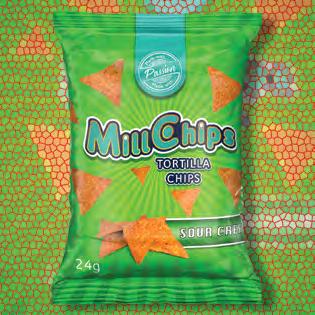

1. Customization: Choose a system that can be tailored to your specific needs. Customization to your existing workflows ensures faster and effortless user adoption.
2. Integration: Opt for a system that integrates with your existing tools, so the new system complements your current processes rather than disrupting them. This includes compatibility with software like ERP and PIM, that your team already uses, enabling a smooth flow of data and information across different departments.
3. Automation: Implement systems that automate repetitive tasks. This saves time, reduces the risk of errors, and allows teams to focus on more valuable activities while enjoying a seamless working environment.
4. Trust: Work with partners who have established expertise in packaging printing. Their insights can be invaluable and help ensure high-quality outcomes.
“By following these steps,” she concludes, “brands can greatly enhance their packaging workflow efficiency, allowing them to concentrate on other strategic areas of their business.”
Get in contact with Miller Graphics today and find out how Atom can help you put all these principles into action. Visit: www.millergraphics.com/contact/
Aside from Atom, another key solution offered by Miller Graphics is print management. A recent project in this regard, with client Findus France (Nomad Foods Group), demonstrates how this can be applied successfully in the food industry to increase efficiency and reduce costs and environmental impact – all without compromising on quality or brand image.
Findus made the decision to reduce the number of colours in its packaging printing from 6 to 4, and in doing so, according to Miller Graphics, was able to achieve substantial gains. But how does such an apparently simple change make such an impact?
“Despite reducing the number of colours for packaging printing, the strategy provided by Miller Graphics to Findus does not harm the marketing impact in any way. It is the colour mix that has been reinterpreted. It is a success for Findus because, on top of reducing costs, it facilitates, stabilizes and speeds up their packaging production.”
Karin explains that some of the key benefits to brands of colour reduction include:
• Cost-control: First and foremost, it’s important to point out that managing print through reducing the number of colours offers significant financial savings.
• Brand consistency: Printers can experience less deviation at the four-colour level than at the Pantone level, as density drops during printing are much less common with four-colour.
• Environmental savings: Reducing the number of colours limits the number of inks and chemicals needed, minimizing waste.
• Shorter time-to-market: “Reducing the number of colours allows for rationalized production: less preparation time, always reloading four groups with the same shades on the same machines. Everything runs smoothly, increasing printing speed.”
Professionals in the FMCG sector looking to find out more about how they can optimize their own processes can find out more about this project by scanning the QR code.



